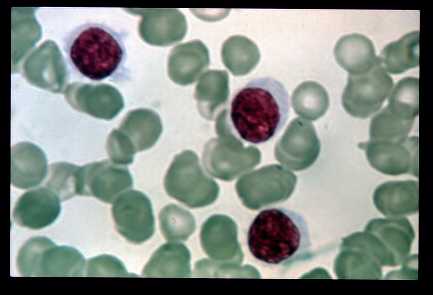Update on EGFR resistance in lung cancer: new directions
This morning I was reading a fascinating paper on lung cancer and one of my favourite proteins, CRKL, from the group of prolific lung researchers at Mass General, Dana Farber, MIT and the Broad Institute in Boston:
“Over-expression of CRKL in immortalized human airway epithelial cells promoted anchorage-independent growth and tumorigenicity. Oncogenic CRKL activates the SOS1-RAS-RAF-ERK and SRC-C3G-RAP1 pathways. Suppression of CRKL in NSCLC cells that harbor CRKL amplifications induced cell death.”
Cheung et al., (2011)
We also know that one of the mechanisms of resistance to gefitinib is over-expression of CRKL in EGFR-mutant cells by activating ERK and AKT signaling.
What was interesting about this research was the observation:
“We identified CRKL amplification in an EGFR inhibitor-treated lung adenocarcinoma that was not present prior to treatment.”
Emphasis mine.
We do know that:
- Adaptive resistance to treatment is a common problem with kinase inhibitors
- Some lung cancer tumours acquire the T790M mutation, which is known to confer resistance to EGFR therapies
- Several groups have also reported other known resistance mechanisms may also occur with the EGFR T790M mutation, including MET amplification and CTNNB1 (β-catenin) mutations.
Cheung et al., (2011) tested to see if the PI3K-AKT pathway was specifically involved with CRKL resistance:
“We examined whether treatment with the PI3K inhibitor GDC-0941 suppressed growth of CRKL–over-expressing HCC827 cells in response to gefitinib. Cells were exposed to GDC-0941 alone or in combination with gefitinib. Combined treatment with GDC-0941 and gefitinib resulted in a substantial decrease in the relative proliferation of CRKL–over-expressing HCC827 cells compared to gefitinib treatment alone.”
The answer was yes, activation of PI3K-AKT signalling contributes to CRKL-induced EGFR inhibitor resistance.
It would therefore be very interesting to see what happens in the clinic to a subset of lung cancer patients with CRKL amplification who are treated with an EGFR and PI3K inhibitor to see if this reduces resistance to treatment and improves outcomes. Trials with the combination are indeed ongoing, although I think they are in a more general population of patients with EGFR driven lung cancer. Based on these findings, a subset analysis might prove to be rather instructive here.
What do these results mean?
This study strongly suggests that CRKL may well be a valid therapeutic target:
“These observations show that CRKL over-expression induces cell transformation, credential CRKL as a therapeutic target for a subset of NSCLC that harbor CRKL amplifications, and implicate CRKL as an additional mechanism of resistance to EGFR-directed therapy.”
“Although CRKL amplifications occur in a relatively small fraction of NSCLC, the finding that a similar fraction of NSCLC with translocations involving ALK respond to treatment with crizotinib indicates that targeting genetic alterations present even in a subset of NSCLC may have clinical importance.”
The general idea that CRKL could act as an oncogene in other cancers with CRKL amplifications is also an intriguing idea that needs be explored further.
The paper is very well written and worth checking out for those interested in EGFR mutations, resistance to therapy and development of new therapies.
References:
![]() Cheung, H., Du, J., Boehm, J., He, F., Weir, B., Wang, X., Butaney, M., Sequist, L., Luo, B., Engelman, J., Root, D., Meyerson, M., Golub, T., Janne, P., & Hahn, W. (2011). Amplification of CRKL induces transformation and EGFR inhibitor resistance in human non small cell lung cancers Cancer Discovery DOI: 10.1158/2159-8290.CD-11-0046
Cheung, H., Du, J., Boehm, J., He, F., Weir, B., Wang, X., Butaney, M., Sequist, L., Luo, B., Engelman, J., Root, D., Meyerson, M., Golub, T., Janne, P., & Hahn, W. (2011). Amplification of CRKL induces transformation and EGFR inhibitor resistance in human non small cell lung cancers Cancer Discovery DOI: 10.1158/2159-8290.CD-11-0046
Engelman JA, Zejnullahu K, Mitsudomi T, Song Y, Hyland C, Park JO, Lindeman N, Gale CM, Zhao X, Christensen J, Kosaka T, Holmes AJ, Rogers AM, Cappuzzo F, Mok T, Lee C, Johnson BE, Cantley LC, & Jänne PA (2007). MET amplification leads to gefitinib resistance in lung cancer by activating ERBB3 signaling. Science (New York, N.Y.), 316 (5827), 1039-43 PMID: 17463250
Sequist, L., Waltman, B., Dias-Santagata, D., Digumarthy, S., Turke, A., Fidias, P., Bergethon, K., Shaw, A., Gettinger, S., Cosper, A., Akhavanfard, S., Heist, R., Temel, J., Christensen, J., Wain, J., Lynch, T., Vernovsky, K., Mark, E., Lanuti, M., Iafrate, A., Mino-Kenudson, M., & Engelman, J. (2011). Genotypic and Histological Evolution of Lung Cancers Acquiring Resistance to EGFR Inhibitors Science Translational Medicine, 3 (75), 75-75 DOI: 10.1126/scitranslmed.3002003

